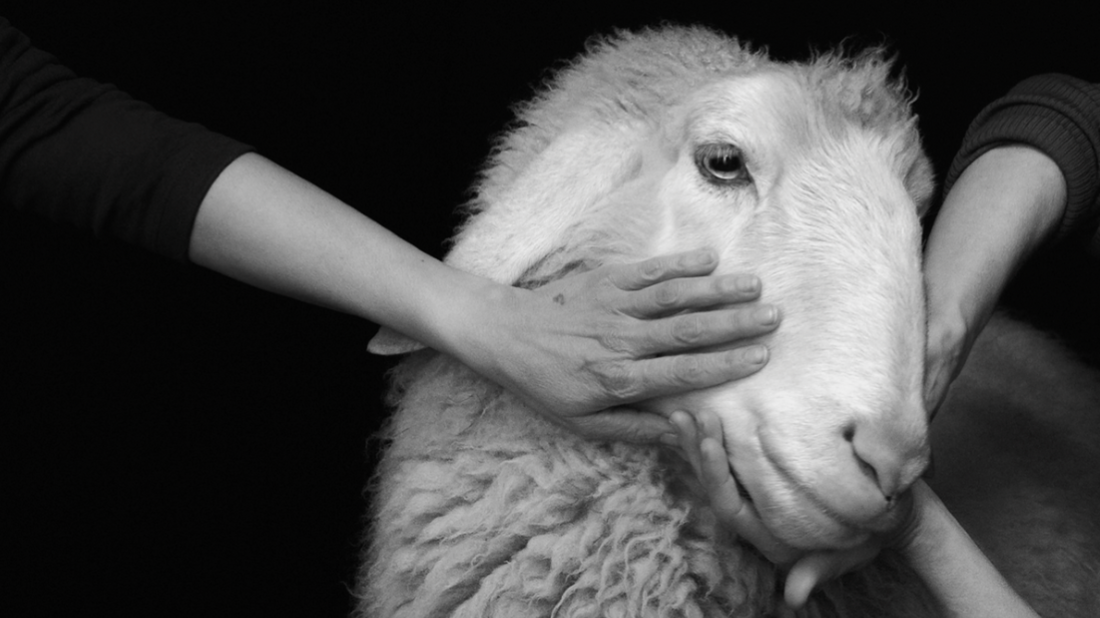
OLTRE TERRA: WHY WOOL MATTERS
In February 2021, the rescue of a runaway Merino sheep gained international fame when it was found in the outskirts of Victoria, Australia with 35 kilograms of wool on its back. This extraordinary occurrence was simply the result of a lack of contact: if Merinos are not sheared by humans, their fleece will continue to grow indefinitely.
As a vivid illustration of modernity’s bioprospecting paradigm, this sheep resembled a wool-producing machine with nose and ears, carefully designed for optimiSation and economic profit, rather than an animal.
Image: Formafantasma, Mamuthones and issohadores-masks, 2023. Mamoiada, Sardinia, Italy © Gegorio Gonella.
Around 11,000 years ago, hunter-gatherers began to follow and cull flocks of sheep instead of killing them wholesale. With time, a new relation between human and animal was established and domestic sheep as we know them today evolved over the course of hundreds of years. This process, however, was never unidirectional – that is, humans acting upon animals. Rather, a complex co-evolution and co-creation has taken place.
Image: Formafantasma, Transhumance path in the Alps, 2023. Still from film. © Gegorio Gonella.
“Oltre Terra. Why Wool Matters” brings together various items relating to sheep farming and the wool industry, paintings, textiles, photographs and videos. A 1,700-year-old tunic, goat masks, and a commissioned video work by artist Joanna Piotrowska, are just some of the objects on display. At the centre of the exhibition, visitors are invited to relax on a large carpet made of a type of wool that would normally be discarded by the wool industry. There is also plenty of research material that lets you delve deeper into the exhibition’s topics.
Formafatasma, Cenciaioli, 2023. Prato, Italy. Still from film © Allessandro Celli.
The title of the exhibition, Oltre Terra, is the Italian term for transhumance, the practice of moving livestock from one grazing ground to another depending on the season and the availability of fodder. The term transhumance itself comes from Latin (trans = across, “oltre” in Italian, and humus = grounds, “terra” in Italian). Transhuman practices involve the constant negotiation of factors relating to the environment, and the humans and animals who inhabit it.
Oltre Terra: Why Wool Matters is on the National Museum Norway until 1 October 2023.
Find out more:
www.nasjonalmuseet.no/en
